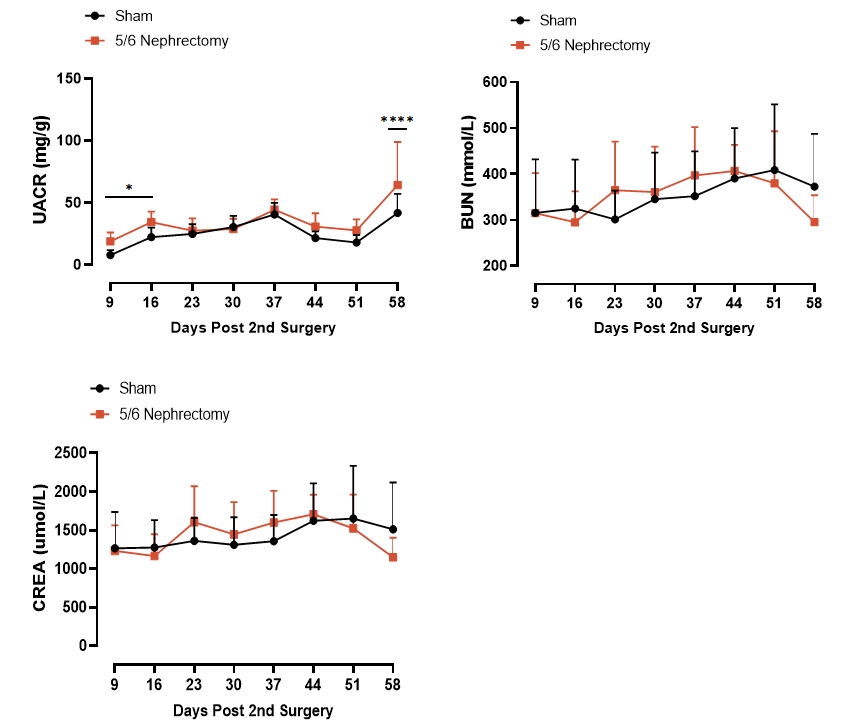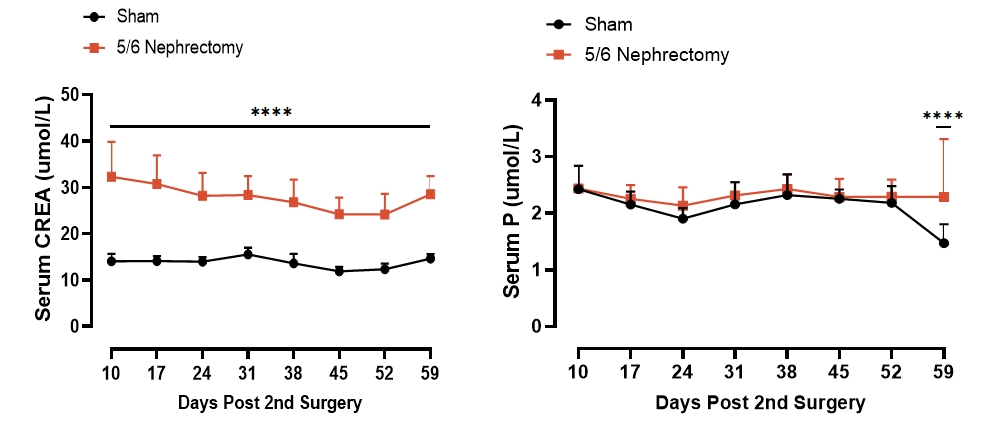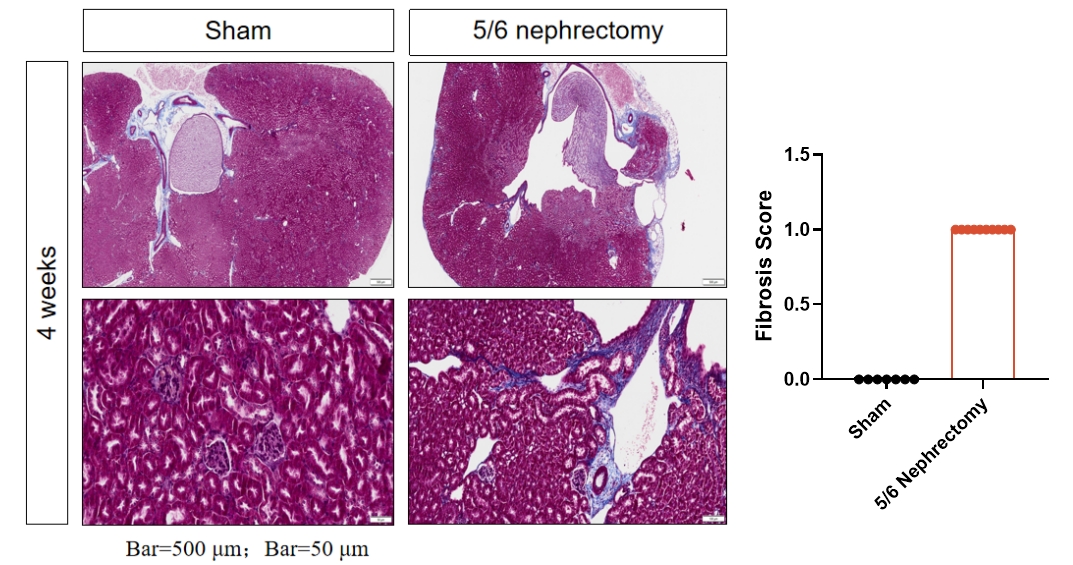Chronic kidney disease (CKD) is a long - term condition characterized by the gradual loss of kidney function over time. The kidneys, responsible for filtering waste, excess fluids, and regulating electrolytes in the body, become damaged, often due to factors like diabetes, high blood pressure, glomerulonephritis, or genetic disorders. As CKD progresses, symptoms may include fatigue, swelling, changes in urination patterns, and high blood pressure. In advanced stages, it can lead to kidney failure, requiring treatments such as dialysis or a kidney transplant. Early detection through regular screenings and management of risk factors are crucial to slow disease progression and improve patients' quality of life.
5/6 Nephrectomy-induced chronic kidney disease model
The 5/6 nephrectomy-induced chronic kidney disease model is an experimental model widely used to study chronic kidney disease (CKD). By surgically removing a large portion of the kidney, this model mimics the reduction in renal function and compensatory changes. The remaining nephrons undergo compensatory hyperfiltration, leading to increased intraglomerular pressure and subsequent glomerulosclerosis. Additionally, the impaired glomerular filtration barrier and the gradual loss of nephron function ultimately result in renal failure. This model is valuable for studying the pathophysiology of CKD and testing potential therapeutic interventions.
Study outline

1. Nephrectomy induced kidney injury
1.1 Significantly decreased body weight after 5/6 nephrectomy

Data presented as Mean ± SD, n=15-32, *,**,*** represented G1-sham vs. G2-5/6 nephrectomy, P<0.05, P<0.01, P<0.001.
1.2 Increased UACR after 5/6 nephrectomy

Data presented as Mean ± SD, n=15-32, *,**** represented G1-sham vs.G2-5/6 nephrectomy , P<0.05, P<0.0001.
1.3 Increased serum CREA after 5/6 nephrectomy

Data presented as Mean ± SD, n=15-32, **** represented G1-sham vs.G2-5/6 nephrectomy , P<0.0001.
1.4 B6 mice show no glomerulosclerosis and slight tubulointerstitial fibrosis in kidney after surgery

1.5 Survival rate: the postoperative survival rate is approximately 96%


